Mimas (Saturn)
Contents
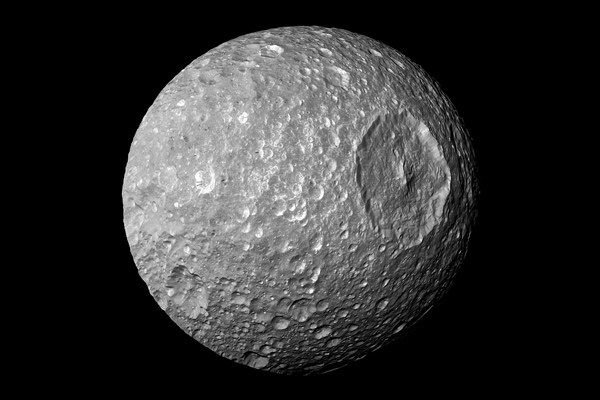 Mimas with its large crater Herschel / nasa.gov
Mimas with its large crater Herschel / nasa.govEver wonder where Steven Spielberg got his idea for the design of the iconic "Death Star" in his Star Wars Trilogy? More than likely, this moon of Saturn was his model for the Empires most deadly weapon. However, Mimas is anything but deadly in reality and in fact is pretty tame. But there is more than meets the eye about this small, prolate (one axis is longer than the other by about 10%) moon.
Discovery
Mimas is the 7th satellite discovered orbiting Saturn and is the smallest celestial body (approximately 396 km (246 mi) in diameter) to be rounded by it's on gravitation. It was discovered by Frederick William Herschel in 1789 a little over 100 years after Saturn and the first 6 moons were spotted by Christian Huygens and Giovanni Cassini. Herschel's son John Herschel named all 7 moons after Titians as Saturn (equivalent to Cronus) was the leader of the Titans.
Position to Saturn
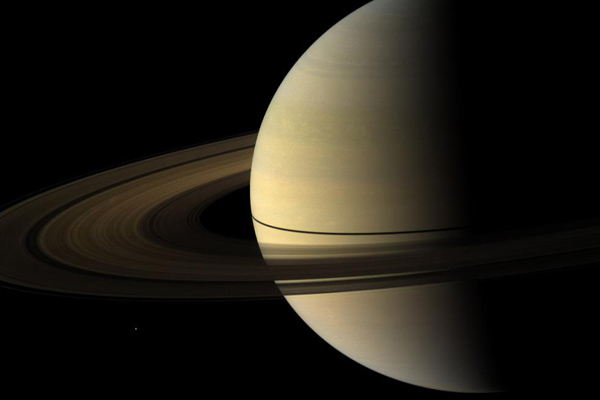 Saturn and Mimas (tiny white dot in the lower left) / nasa.gov
Saturn and Mimas (tiny white dot in the lower left) / nasa.govMimas is the innermost of Saturn's moons orbiting at a distance of approximately 185,520 km (115,326 miles) with an inclination of 1.5. Mimas takes approximately 22.55 hours to orbit around its parent. It is tidally locked to Saturn so only one side is facing Saturn at all times.
Mimas orbits within the Cassini Division, a large gap located between Saturn's A and B rings. It is believed that Mimas is responsible for this gap, clearing it of all debris that may have been in this area in the past or try to settle there currently.
Internal Structure
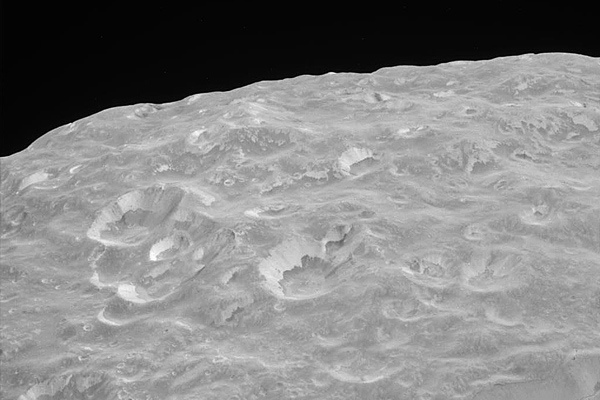 Mimas's limb, showing striking albedo features on crater walls / ciclops.org
Mimas's limb, showing striking albedo features on crater walls / ciclops.orgMimas' internal structure is currently unknown but recent data collected on Mimas' rotation showed an interesting oddity to brought scientist to two theories as to how Mimas may be under its rocky, water-ice surface. During observations of Mimas' rotation on its axis, it was noticed that Mimas wobbles. Scientist have concluded that this can be caused by three different ideas.
The first idea is that Mimas' core may not be as spherical as Mimas outside. In fact, it is thought that it may be football shaped instead. The second theory is that Mimas has a liquid subsurface ocean. And the third idea is that Mimas' core or mantle may consist of two different materials and densities. However, in truth, they are unsure as to why Mimas wobbles.
Surface/Geography
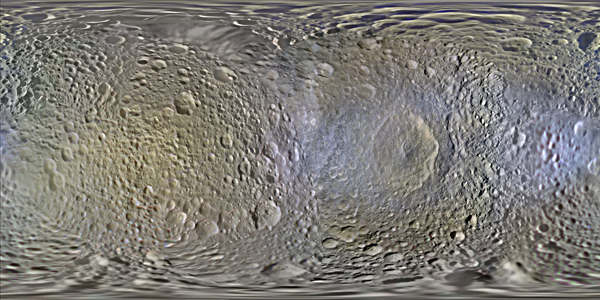 Color Map of Mimas / nasa.gov
Color Map of Mimas / nasa.govRespectfully, Mimas is a dead world with no geological or atmospheric activity occurring. Its surface is covered in impact craters with one crater, Herschel, being 81 mi (130 km) wide and 3.1 mi (5 km) high on its side giving it the famous "death star" appearance. Within this massive crater is a mountain peak that rises 3.7 mi (6 km) high. This impact was so massive that it almost destroyed the moon when it occurred and caused fractures on the opposite side it had hit.
Because its surface consists primarily of water ice, the larger portion of light it receives is reflected back into space and not absorbed by the moon's surface. As a result, the average temperature on the surface is approximately -200°C (-328°F) on any given day.
Atmosphere/Climate
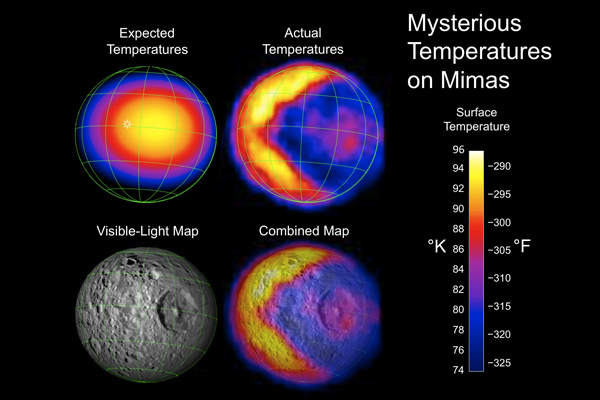 Misterious Temperatures on Mimas / nasa.gov
Misterious Temperatures on Mimas / nasa.govMimas shows no signs of any sort of magnetic field or atmosphere that has been detected. There have been no signs of water vapor or gasses of any kind around Mimas. In order for an atmosphere to form, there would need to be either water or some other element in a gaseous form that the moon's gravity would collect. Neither exists on Mimas that we know of and so it does not maintain an atmosphere.
Exploration
Currently, there have only been three space probes that have observed Mimas. Pioneer 11 was the first to explore Mimas during its flyby in 1979 and the Voyager probes 1 and 2 sent back several images of the moon. Voyager 1 was the first to send back images of the Herschel crater. The Cassini orbiter in 2010 took images of Mimas during its flyby and sent back data on its orbit which is how its "wobble" was detected and lead scientist to believe there is more going on with Mimas that can be seen. No other missions have been proposed or planned in the near future. With no geological activity to be seen as of yet, there is very little interest in finding out much more on this moon.
See also: All satellites and moons, Saturn's satellites and moons, Saturn, Objects
Video Gallery

-
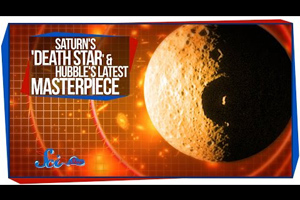 Saturn's 'Death Star' and Hubble's Latest Masterpiece
Saturn's 'Death Star' and Hubble's Latest Masterpiece
-
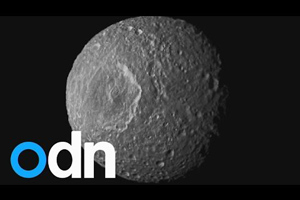 Saturn moon Mimas may have underground ocean
Saturn moon Mimas may have underground ocean
-
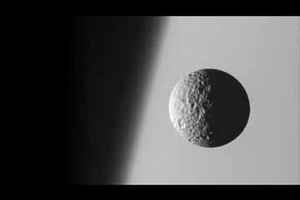 Cassini Scientist for a Day - Fall 2008
Cassini Scientist for a Day - Fall 2008
-
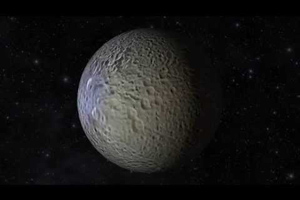 Cassini Maps Saturn's Moon Mimas
Cassini Maps Saturn's Moon Mimas